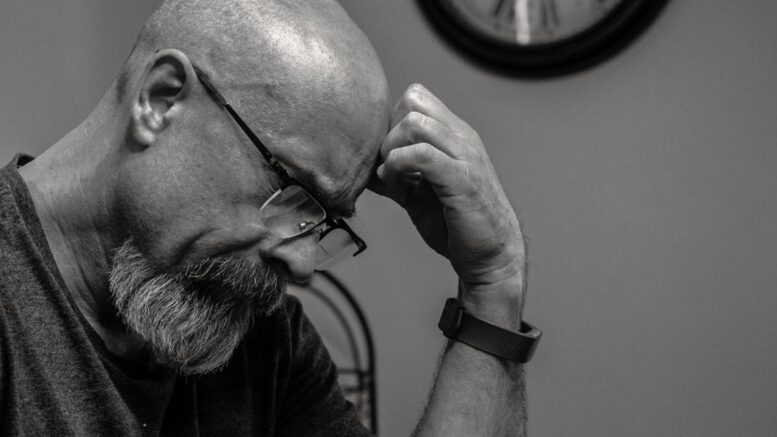Hair constitutes a significant feature in your body, determining your looks and adding charm to your personality. A good hairstyle is never out of fashion. But what happens when you experience intense and unexplainable hair fall? It can upend your life, impact your confidence, and destroy your sense of style.
Hair fall is fairly common in individuals. It may result from various factors such as dietary deficiencies, changes in the hormonal structure, side effects from medications, aging, and, most commonly, hereditary male pattern baldness.
What Causes Male Pattern Baldness?
Androgenetic Alopecia or male pattern baldness is a hereditary condition primarily found in men. The hair starts growing thinner from several angles depending on the person at a very early age.
Different people experience hair fall in various stages and seek specific treatments likewise. However, understanding the reason and scale of the shedding is crucial. This is where the Norwood Scale comes into the picture.
What is the Norwood Scale?
Developed in the 1950s, the Norwood Scale was used as a classifying system to identify the extent and various patterns of male pattern baldness. It is the most popular categorization scale for analyzing baldness in a man.
Considering hair loss tends to occur in different scalp regions, the Norwood scale helps identify the areas where the shedding is much more prominent. Some men start with a receding hairline; others lose hair from the back of the scalp or the sides.
This particular evaluation method is used to identify the areas of concern where treatment is supposed to commence, either with medications or hair transplant techniques. Various hair transplant providers use this method to evaluate the hair loss scale.
That said, patients must research adequately to find out norwood 7 hair transplant before and after from reliable transplant service providers. Doing this will help them stay informed and know what to expect when undergoing the procedure.
Stages of Norwood Scale
First Stage
It is the only stage in the Norwood Scale where there is no hair loss around the crown area or a receding hairline. This stage cannot be considered preliminary because no hair loss is reported.
Maintaining this hairline in their 20s and 30s is not uncommon for people with no hereditary issues. Additionally, no treatment is required for this stage because the hair is still intact.
Second Stage

The type of hair fall associated with this stage can be considered the preliminary stage. Here people showcase a slight recession of the hairline, particularly in the temple area, but the hair on their scalp remains intact. M-, V-, and U-shaped hairlines are common during this stage.
The scale of hair fall is less but can be seen distinctly. Usually, the reduction of the hair count can be concealed by a haircut. If your hairline is exhibiting Norwood type 2 patterns, you should seek treatment and try to reduce the hair fall in an early period.
Medications like minoxidil and finasteride can be started to slow down the hair fall process.
Third Stage
As the stages progress, the hair fall becomes more visible. Here there this more receding of the hairline. The shape is a much more distinct M or V pattern. Hair loss associated with the crown and vertex areas is also prominent.
The medications mentioned above can help you slow hair loss, and hair transplant surgery can be undertaken for effective hairline restoration.
Fourth Stage
This stage of balding is much more severe and explicitly apparent. There is further receding of the hairline with a drastic reduction in hair density. On the sides, there are small patches that are connected by narrow strands of hair.
You can use the prescribed medications to improve the thickness and coverage. A hair transplant is also an additional solution. However, you need to act fast to save your hair.
Fifth Stage
The hair fall in this stage is much more advanced. The strands of hair parting your hairline and crown gets smaller and thinner. The visuality of baldness is more projected here as compared to other stages. This pattern of hair fall is also referred to as the horseshoe design of balding.
The severity of your hair fall makes treatment difficult. However, hair transplant surgery can be a viable option to restore your hair.

Sixth Stage
By now, hair loss is extremely severe. The top of the scalp is almost devoid of hair. The remaining hair on the top of the head is all gone, or they are getting thinner.
Medications can hardly affect the regrowth because of the lack of hair. The best option in this stage is a hair transplant. Additionally, with the FUE method, some hair can be reverted to stage 4 or 5.
Seventh Stage
In the last stage of the Norwood Scale, the severity of hair loss is at its peak. All of the hair on your scalp is gone. Apart from a relatively modest growth on the sides, the rest of your scalp becomes hairless.
Similar to stages 5 and 6, medications don’t have any effect due to the severity of hair fall. You can either seek hair transplant surgery or shave your head completely.
Conclusion
Losing hair can drastically alter your personality and affect your confidence. The Norwood scale can help you understand the pattern of hair loss, so you seek treatment at the earliest and slow down the process. With hair loss, it’s vital to act as quickly as possible.
